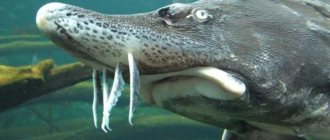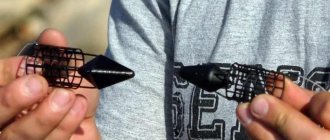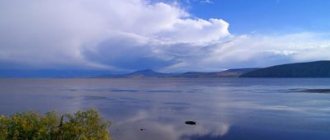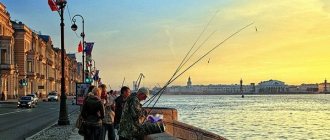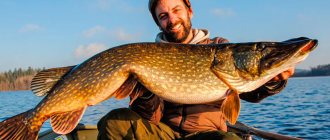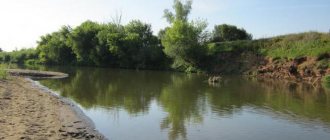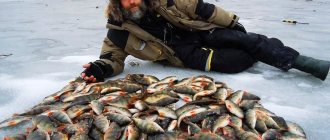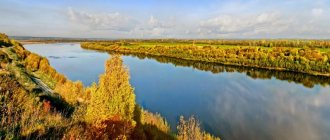Geographical information
The river is formed near the villages of Krasny Gai and Free World at the confluence of the Bolshaya Laba and Malaya Laba, which originate from glaciers on the northern slope of the Main Caucasus Range. Length - 214 km (with Bolshaya Laba - 347 km), basin area - 12,500 km².
In the upper reaches of the Laba and its tributaries there are turbulent mountain rivers flowing in deep gorges. In the lower reaches of the river the banks are gentle and the flow is calm. The river is fed by mixed sources: snow, glaciers and rain. The average flow rate near the mouth is 95.7 m³/sec. The laba freezes at the end of December, but not every year; it opens at the end of February - beginning of March. Used for irrigation.
On its flat part, the Laba receives many tributaries, most of them are regulated, their flow consists of strings of ponds (from the Krasnodar side) or irrigation canals (from the Adyghe side). At the same time, the rice paddies built in the lower reaches of the Laba in the 70s of the 20th century are currently not in use.
Main tributaries: Chamlyk (right); Khodz, Chohrak, Ulka, Giaga, Psenafa, Fars (left).
On the territory of Karachay-Cherkessia, before the confluence of the Bolshaya and Malaya Laba, on the banks of the river there are the villages of Phiya, Damkhurts, Zagedan, Rozhkao, Asian; villages of Psemen, Kurdzhinovo, Ershov, Predgornoye, Podskalnoye. Opposite the confluence of the Laba and the Kuban is the city of Ust-Labinsk.
Groundwater also plays a significant role in feeding the Laba River. In some places powerful springs emerge in the river valley. In winter, the Laba River freezes for 1-3 months, but in the upper reaches of the rapids a continuous ice cover does not form.
The Bolshaya Laba River was crossed on rafts by Penza tourists
The Bolshaya Laba River has long attracted Penza tourists. Valery Kosogorov tells about sports rafting on the Laba River of a group of young Penza tourists in 1974. The participants of this hike subsequently formed the backbone of the famous Penza group “Beavers”, which covered many difficult and interesting routes in different regions of the Union.
Background of the alloy
The Bolshaya Laba River is a mountain river in the North Caucasus, a left tributary of the Kuban River in the North-Western region between Arkhyz and Krasnaya Polyana. Suitable for rafting in summer. With a relatively short length of the rafting part (from Phiya to Kurdzhinovo, approximately 120 km), the river has many natural obstacles and is classified as a “troika” with elements of a “six”.
Before arriving in Penza in 1972, I had already been going on difficult hikes for ten years: mountain, taiga, water. I went mainly with Ukrainian teams and, having moved to Penza, for another ten years I went on long hikes mainly with old Ukrainian friends, with some of whom I still correspond.
Naturally, having settled in Penza, I began to look for common ground with local tourists. I met N. Platov, S. Golubtsov, I. Bonaryuk.
I was alarmed by the narrow specialization of local “luminaries” and the excessive bureaucratization of tourist life. The half-hour meeting with Bonaryuk turned into meticulous asking what papers, certificates, etc. I had.
, and almost not a word about regions, mountains, rivers. We parted not very happy with each other.
In the summer I went with the “Khokhols” to a difficult “five” in the Altai Mountains, and in the fall young guys came to me, breaking away from I.Z. Bonaryuk. They wanted to swim, but he didn’t want to know anything except the mountains.
This is how the sprouts of the subsequently famous group “Beavers” hatched. The winter was spent in general physical training in the gym of the Higher Technical School, and closer to spring the question arose about some serious river.
This is how the idea of rafting along the Labe in early May arose.
Bolshaya Laba River. Start
By the time we left, there were 14 of us. The leader was Vasya Lanshchikov.
There were guys (Sugrobov, Nazarov, Ronin, me) who had experience in rafting on mountain rivers, but there were also guys (mostly girls) who didn’t have a very clear idea of what adventures awaited us.
Be that as it may, at the end of April we unloaded on the river bank near the village of Phiya. The group was cheerful, singing, and even though I never went anywhere with many of them again, I still have the most favorable memories of the group.
We split into two crews. Vasya’s team decided to build a flexible raft using “sausages” from car inner tubes. I, Volodya Nazarov, Dima Ronin were proponents of a more rigid design on automobile and trolleybus tubes with rigid “ties” - pads, which I had already experienced on the Sayan rivers. The ruins of a sawmill on the river bank were used as building material.
Beginning of the rafting
Sciatica and cramp
By the beginning of the “May Day demonstration,” the half-finished “ships” were brought ashore. The holiday was spent on final finishing of the ships. The ship of Lanshchikov, Chernov, Sugrobov and Co. was named “Radiculite”. Our ship received the no less “romantic” name “Convulsion”.
Songs with a guitar until dawn - and start! Life jackets are put on, cargo is secured. The movement tactics are simple and correct: while one raft passes the canyon, the team of the second raft with ropes and lifebuoys organizes insurance below the canyon, while simultaneously providing film and photography.
It was planned to go through all three canyons with the outskirts of the “six” rapids “Grebenok”, formed by coastal rocks blown up during the construction of the road.
Raft "Radiculite"
Start. The very first rapids revealed great differences in the behavior of our ships. The “convulsion” was tough, due to the boards and beams from the sawmill, with the breakwaters, it went seriously, solidly, confidently. “Radiculite,” with its four long “sausages” of chambers and a flexible frame, turned out to be lighter and more maneuverable, but with a “surprise.”
The surprise was that as soon as the large water began to press on the “Radiculite” in the threshold, it sagged and went under the water. Then the buoyant force was activated, the raft jumped out of the water and straightened out like a trampoline, throwing part of the crew overboard.
He behaved in a similar way in every canyon, and after each rapid we had to fish someone out of the water.
Raft "Convulsion"
Second Canyon
Here is the second canyon. The large rocky rift ends in a waterfall more than a meter high between steep stone cheeks. Below the cheeks there is a pebble beach, where we will arrange insurance.
You can climb onto one of the cheeks. Great place for photography. We decide that “Radiculitis” will go first again. We take our seats and wait. Next to us is a team from Kazan.
They also plan to raft and came to watch it.
Suddenly a kayak appears from above. Two men, skillfully maneuvering between the stones, approach the drain itself and... decide to dock! Everything happens so quickly that no one has time to help them.
The captain jumps onto the rocks, the kayak capsizes, and the sailor goes headfirst into the waterfall.
Our rescuers catch him below the drain, and the stream presses the kayak against a forest rubble and turns into a “corkscrew.”
Second Canyon
Well, here comes “Radiculitis”. Everything goes well. A flag flutters at the stern, hands are raised in greeting. In the drain, "Radiculite" goes completely under the water, so that only the flag is visible, and then suddenly jumps out and throws almost the entire team into the water.
We catch it, pull it to the shore, hand over the safety lines, photos and film equipment, and go up. Now it's our turn. On the way we meet a truck. Pontoons and heads of the Kazan team stick out from the body.
They decided so! “Cramp” passes the canyon effortlessly.
Meeting with Oleg Abalakov
A short time - and we are at a common fire. We set up camp and dry out. There are also kayakers here. Their kayak cannot be repaired, and in the morning they are going to Moscow. The eldest of them turned out to be Oleg Abalakov, himself a celebrity and the son of the no less famous Vitaly Abalakov! How many songs were sung with a guitar that night?!
The next, third canyon is called “Salty Rocks”. Here are the most serious rapids and rifts, then there is a canyon and a large stretch where you can arrange insurance. According to tradition, “Radiculitis” comes first. You probably already guess that at the threshold, part of the team again finds itself overboard? Two remain on the raft, and it disappears into the canyon.
Some of the guys stay close to the raft, and only Yura Chernov’s blue helmet flashes lonely between the waves, also hiding around the bend. There's no time for filming here. We run to the insurance place. On the raft are Sugrobych and Lanshchikov, they have only one row, the raft is uncontrollable, and they are carried past the rescuers into the teeth of the “Comb” rapids.
Here “Radiculit” stopped fooling around, and the guys flew cleanly between the terrible rocks, and below they were helped to moor by the guys from Voronezh.
Insurers are catching the rest of the sciatica sufferers, but Chernov is not there. We run along the shore, screaming. Finally, we hear a voice from under the rock.
Yura climbed out onto the rock, grabbed onto a tree and hung there, wet, cold and scared. We throw him a rope and pull him up. Now it’s Cramp’s turn.
We pass relatively normally, except that we don’t fit between the boulders everywhere, and the mad river drags us over the stones.
"Six" extreme
We moor at the camp. Emotions are overflowing. Noise, talk! Dinner, songs and... secret advice! Question one: how is this so? “Radiculitis”, even if by accident, went through the “comb”, and why is “Convulsion” worse?
Decision is made. In the morning we remove all the cargo, unload the sailors and sailor women, arrange photo-cameramen, rescuers and - forward! Before the start, we tie safety loops to the raft and agree that at my command we will drop everything, grab the loops and hold on with a death grip.
Start! At first everything goes well. We manage to direct the raft to the widest drain, but the raft goes sideways. Dima Ronin and I are trying to make at least a couple more strokes, but a powerful stream pressed the row against the rock, and we are not able to pull it out.
I shout: “Hold on!”, We grab the hinges and press ourselves against the flooring.
The raft slides almost vertically between the teeth, and we are covered with a wave of water. I feel a blow on my back. It was Dimka who was torn from the raft, thrown over me and thrown into the water. I open my eyes. The three of us are on a raft, the raft is rushing towards a rock. Dimka emerges between the rock and the raft.
Well, now it will crush! The whirlpool pulls him under the water, and “Spasm” hits a rock and bounces off. Ronin emerges, we drag him onto the raft, and with one row, with the help of the same Voronezh residents, we moor next to the “radiculitis”.
The guys are shocked! Yesterday the adventure was forced, but today it was deliberate? Now they would briefly say: “Extreme!”, but then they simply twirled their fingers at their temples and shook hands.
Threshold "Comb"
There's beauty all around
When you raft down a mountain river for a long time, the surrounding gloomy walls and canyons have a depressing effect on the psyche. You forget that there is the sun, the sky, the horizons. It is sometimes necessary to make radial trips to neighboring ridges in order to change emotions, and simply to warm up from the icy water. After passing the “comb” - a day of rest.
We climb to the domed peak near the village of Rozhkovo. The panorama is amazing. Very close is the Main Caucasus Range, sparkling with eternal ice and spring snows. The interweaving of ridges and peaks stretches all the way to the horizon, and under your feet there is already spring, grass, and the first flowers. On the descent we find a unique valley. Waterfalls, grottoes, caves. Beautiful and unusual.
At the evening council we decide to disassemble “Radiculitis”. The design did not justify itself. Half of the team will hitch a ride with the main cargo, the other half will try to overcome 20 rapids kilometers on the “Sudorozh”. Meeting in Kurdzhinovo.
Almost competitive selection for the “Convulsions” team. The rowers remain the same, but the deck crew changes slightly. The river never lets you get bored. And even if these are no longer the same obstacles as in the upper reaches, there are rapids and rifts in a continuous line. The current is fast.
Here is the village. And then we almost suffered a serious accident. The river divided into several branches. We are carried along by the biggest. Around the bend it turns out that the branch is blocked by a dam made of fallen trees. We urgently need to land on the island.
We row with all our strength. Vera Ordina jumps into the water with the end of the mooring rope. The water is almost chest deep. We are having difficulty getting started. I look at Ordina and see my camera on her stomach, which I hung on her so that it wouldn’t get splashed.
For a while I am speechless; water pours out of the camera in a thin stream. We untie the cargo and cameras and release the “Spasm” into free swimming. The raft approaches the rubble, becomes vertical and disappears under the rubble. The route is over. Teaming up with the rest of the team.
Again buses, trains and here it is - Penza.
P.S
Many years have passed since then. Some of the participants are no longer alive. Some grumble like old people, believing that they were drawn into an adventure when they were young. The main part of the group bursts into smiles at chance encounters. Part of the group has become thoroughly involved in water tourism.
They formed the backbone of the later famous “Beavers” group, which climbed many difficult and beautiful routes in various regions of the Union. I also went with them to the Koiva River and the upper reaches of the Kuban.
Then the mountains lured me back, but it’s still nice to remember this little adventure! And the name “Convulsion” became permanent for all my ships in subsequent voyages.
This was my first trip with the Penza residents. Gradually the number of joint trips grew, this process lasted a long time, since I never became an adherent of any one type of travel, but continued to engage in taiga, skiing, rafts, kayaks, and mountaineering, and I don’t regret it at all !
Valery Kosogorov - "Beard".
The Bolshaya Laba River - with elements of the sixth category of complexity. Sports rafting requires from tourists such qualities as strength and endurance. The drug LEVETON-FORTE can increase the body's abilities. This natural, doping-free drug is recommended by leading Russian athletes and sports specialists.
Source: https://turizmvpenze.ru/reka-bolshaya-laba-1974/

